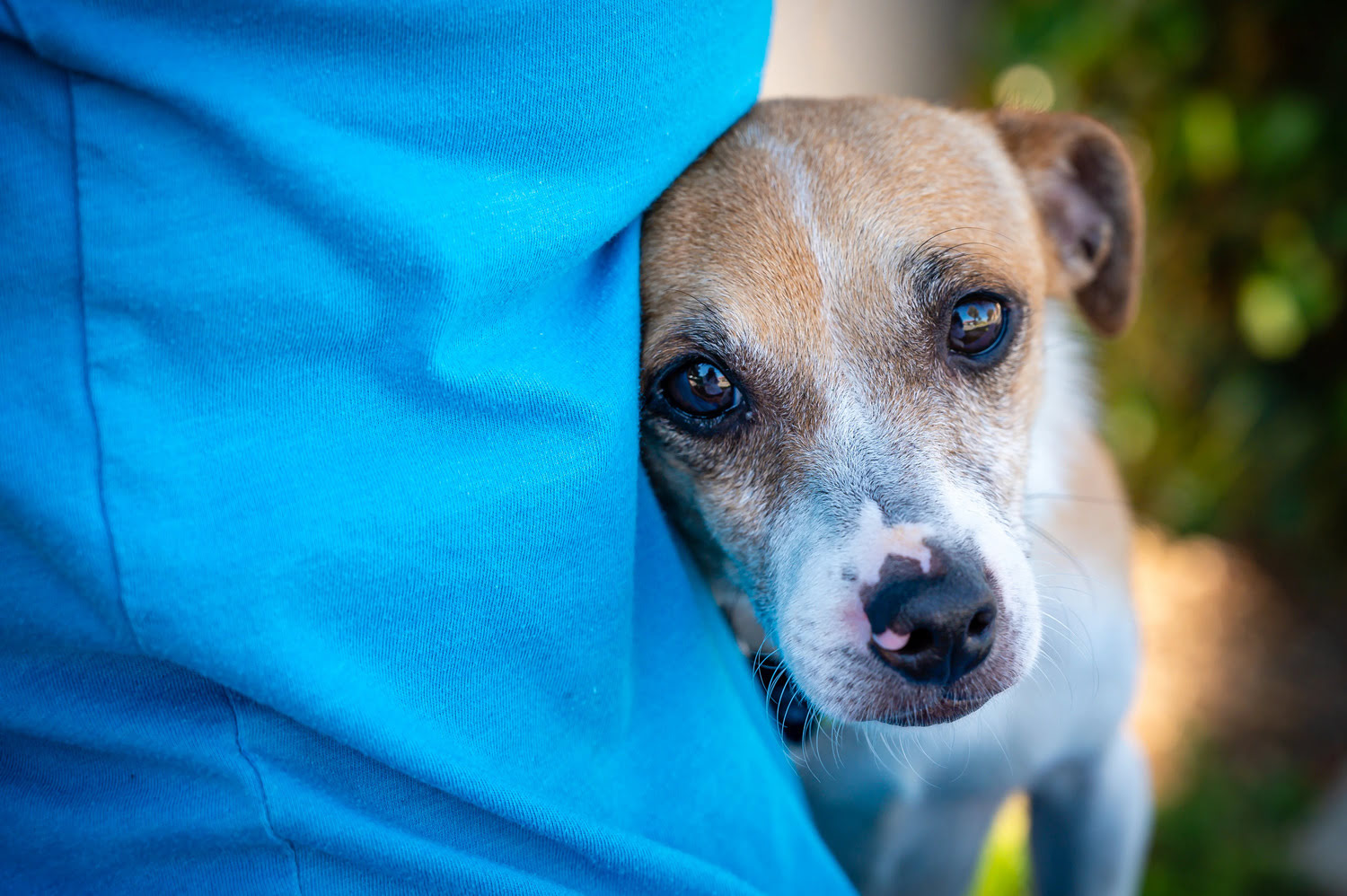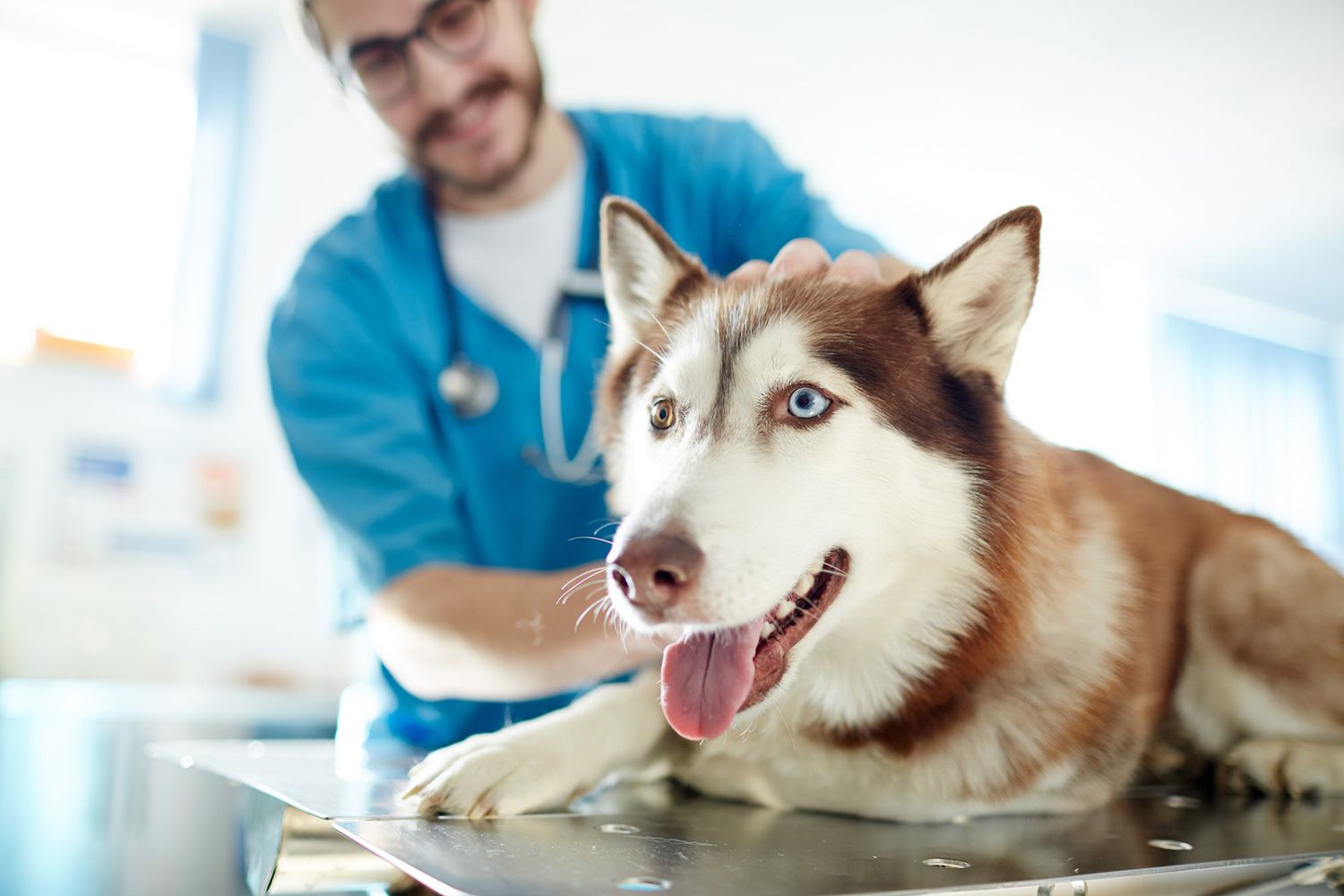Home>Health & Wellness>Common Health Issues>How To Check For Cancer In Dogs When Experiencing Bleeding Diarrhea


Common Health Issues
How To Check For Cancer In Dogs When Experiencing Bleeding Diarrhea
Published: February 4, 2024
Learn about common health issues in dogs, including how to check for cancer when experiencing bleeding diarrhea. Keep your furry friend healthy and happy.
(Many of the links in this article redirect to a specific reviewed product. Your purchase of these products through affiliate links helps to generate commission for Pawsomeoldies.com, at no extra cost. Learn more)
Table of Contents
Introduction
When our furry companions experience health issues, it can be a cause for concern and prompt us to take immediate action. One such distressing symptom in dogs is bleeding diarrhea, which can be indicative of various health conditions, including cancer. As responsible pet owners, it's crucial to be vigilant and proactive in monitoring our dogs' health and seeking appropriate care when necessary.
In this comprehensive guide, we will delve into the topic of checking for cancer in dogs when they are experiencing bleeding diarrhea. We will explore the symptoms of cancer in dogs, the potential causes of bleeding diarrhea, and the essential steps to assess the possibility of cancer in our beloved canine friends. By understanding these crucial aspects, we can better equip ourselves to provide the necessary support and care for our dogs during challenging times.
Let's embark on this informative journey to gain a deeper understanding of how to identify and address potential cancer in dogs exhibiting symptoms of bleeding diarrhea.
Understanding the Symptoms of Cancer in Dogs
Cancer can manifest in various forms in dogs, and it's essential to recognize the potential symptoms to ensure timely intervention and treatment. While cancer symptoms can vary depending on the type and location of the cancerous growth, there are several general signs that may indicate the presence of cancer in dogs.
Unexplained Weight Loss
Unexplained weight loss is a common symptom of cancer in dogs. If your furry companion is shedding pounds despite maintaining a regular appetite and diet, it could be a cause for concern. Sudden and significant weight loss should prompt a thorough veterinary evaluation to rule out potential underlying health issues, including cancer.
Lethargy and Weakness
Dogs diagnosed with cancer often exhibit signs of lethargy and weakness. If your dog appears unusually fatigued, lacks energy during activities they once enjoyed, or experiences difficulty in performing routine tasks, it could be an indication of an underlying health issue, including cancer.
Changes in Appetite
A noticeable change in your dog's eating habits, such as a sudden loss of interest in food or increased hunger without weight gain, can be a red flag for cancer. Monitoring your dog's appetite and dietary patterns can provide valuable insights into their overall health and well-being.
Read more: What Happens When A Dog Has Stomach Cancer
Abnormal Bleeding
Unexplained bleeding, including bleeding diarrhea, can be a concerning symptom associated with various types of cancer in dogs. If you observe blood in your dog's stool or notice abnormal bleeding from any part of their body, it's crucial to seek immediate veterinary attention for a comprehensive assessment.
Persistent Digestive Issues
Digestive irregularities, such as chronic diarrhea or constipation, can be indicative of an underlying health problem, including cancer. If your dog experiences prolonged gastrointestinal disturbances, it's important to consult with a veterinarian to determine the underlying cause and explore appropriate diagnostic measures.
Lumps and Swellings
The presence of abnormal lumps, bumps, or swellings on your dog's body, particularly those that persist or grow in size, may warrant further investigation for potential cancerous growths. Regularly palpating your dog's body and promptly addressing any unusual masses can aid in early detection and intervention.
By familiarizing ourselves with these potential symptoms of cancer in dogs, we can actively monitor our furry companions' well-being and promptly seek veterinary care if any concerning signs arise. Early detection and intervention play a pivotal role in enhancing the prognosis and treatment outcomes for dogs diagnosed with cancer.
Causes of Bleeding Diarrhea in Dogs
Bleeding diarrhea in dogs can be a distressing and alarming symptom for pet owners, prompting immediate attention and concern for their canine companions' well-being. Understanding the potential causes of bleeding diarrhea is crucial in identifying the underlying health issues and providing appropriate care for affected dogs.
-
Dietary Indiscretions: Dogs are known for their curious and indiscriminate eating habits, often consuming items that are not part of their regular diet. Ingestion of spoiled food, garbage, or toxic substances can lead to gastrointestinal irritation and result in bleeding diarrhea.
-
Infections: Bacterial, viral, or parasitic infections can trigger inflammation and damage to the intestinal lining, leading to diarrhea with the presence of blood. Common culprits include parvovirus, salmonella, and giardia, which can cause severe gastrointestinal distress in dogs.
-
Inflammatory Bowel Disease (IBD): Dogs can develop IBD, a chronic condition characterized by inflammation of the gastrointestinal tract. IBD can lead to persistent diarrhea, often containing blood, and may require long-term management and dietary modifications.
-
Intestinal Parasites: Infestations of intestinal parasites, such as hookworms or whipworms, can cause significant irritation and damage to the intestinal mucosa, resulting in bloody diarrhea. Routine deworming and preventive measures are essential in minimizing the risk of parasitic infections in dogs.
-
Foreign Body Ingestion: Dogs may accidentally ingest foreign objects, such as bones, toys, or small household items, which can obstruct the intestinal tract and cause bleeding diarrhea. Prompt veterinary intervention is crucial to address potential obstructions and prevent further complications.
-
Gastrointestinal Tumors: The presence of tumors or growths within the gastrointestinal tract can lead to bleeding diarrhea in dogs. These tumors may be benign or malignant and can significantly impact digestive function, leading to alarming symptoms such as bloody stools.
-
Medication Side Effects: Certain medications, especially non-steroidal anti-inflammatory drugs (NSAIDs) and corticosteroids, can cause gastrointestinal irritation and ulceration, resulting in bloody diarrhea as a side effect.
-
Systemic Diseases: Underlying systemic conditions, such as liver disease, kidney failure, or coagulation disorders, can manifest with gastrointestinal bleeding and diarrhea in dogs. These conditions require comprehensive diagnostic evaluation and targeted treatment approaches.
By recognizing the diverse potential causes of bleeding diarrhea in dogs, pet owners can collaborate with veterinarians to identify the underlying factors contributing to this distressing symptom. Timely and accurate diagnosis is essential in implementing effective treatment strategies and promoting the well-being of dogs experiencing gastrointestinal issues.
Read more: When To Put Your Dog Down With Cancer
Steps to Check for Cancer in Dogs with Bleeding Diarrhea
-
Consultation with a Veterinarian: When a dog presents with bleeding diarrhea, seeking prompt veterinary care is paramount. The veterinarian will conduct a comprehensive physical examination and review the dog's medical history to assess the severity and duration of the symptoms. Open communication with the veterinarian regarding the observed changes in the dog's health is crucial in guiding the diagnostic process.
-
Diagnostic Imaging: In cases where cancer is suspected, diagnostic imaging techniques such as X-rays, ultrasound, or advanced imaging modalities like CT scans may be employed to visualize the internal structures of the dog's body. These imaging studies can aid in identifying potential abnormalities, including tumors or irregularities within the gastrointestinal tract.
-
Blood Tests and Laboratory Analysis: Blood tests, including complete blood count (CBC), serum chemistry panels, and specific tumor markers, can provide valuable insights into the dog's overall health status and detect potential abnormalities indicative of cancer. Additionally, fecal examinations may be conducted to rule out parasitic infections and assess the presence of occult blood in the stool.
-
Gastrointestinal Endoscopy or Biopsy: In instances where gastrointestinal cancer is suspected, an endoscopic examination of the digestive tract may be recommended. This minimally invasive procedure allows for direct visualization of the gastrointestinal mucosa and enables the collection of tissue samples for biopsy. Biopsy samples are subsequently analyzed to determine the presence of cancerous cells and characterize the nature of the tumor.
-
Exploratory Surgery: In cases where non-invasive diagnostic methods yield inconclusive results or when there is a high suspicion of cancer, exploratory surgery may be recommended. During surgery, the veterinarian can visually inspect the abdominal cavity, obtain tissue samples for biopsy, and assess the extent of any suspected tumors or abnormalities within the gastrointestinal system.
-
Oncology Consultation: If a diagnosis of cancer is confirmed, seeking the expertise of a veterinary oncologist is crucial in formulating a comprehensive treatment plan tailored to the specific type and stage of cancer. Oncologists can provide valuable insights into available treatment options, including surgery, chemotherapy, radiation therapy, and supportive care measures to optimize the dog's quality of life.
By following these essential steps to check for cancer in dogs presenting with bleeding diarrhea, pet owners can collaborate with veterinary professionals to facilitate timely diagnosis and implement appropriate treatment strategies. Early detection and intervention play a pivotal role in enhancing the prognosis and well-being of dogs affected by gastrointestinal cancer.
When to Seek Veterinary Care
Recognizing the appropriate timing to seek veterinary care for a dog experiencing bleeding diarrhea is crucial in addressing potential health concerns and ensuring the well-being of our beloved pets. Prompt intervention and professional assessment are essential in identifying the underlying causes of gastrointestinal distress and initiating targeted treatment approaches. Here are the key indicators that signify the need for immediate veterinary attention:
Persistent or Severe Symptoms
When a dog exhibits persistent or severe symptoms of bleeding diarrhea, including the presence of a large volume of blood in the stool, frequent episodes of diarrhea, or signs of distress and discomfort, it necessitates urgent veterinary evaluation. Persistent symptoms may indicate an underlying health issue that requires thorough investigation and intervention.
Sudden Changes in Behavior or Appetite
Sudden changes in a dog's behavior, such as lethargy, reluctance to engage in regular activities, or a noticeable loss of appetite, can signal potential health disturbances, including gastrointestinal issues. These abrupt changes in behavior warrant prompt veterinary assessment to determine the underlying cause and provide appropriate care.
Read more: What Happens When Dogs Get Cancer
History of Chronic Health Conditions
Dogs with a history of chronic health conditions, gastrointestinal disorders, or a predisposition to cancer may require heightened vigilance and proactive veterinary care when presenting with symptoms of bleeding diarrhea. Pet owners familiar with their dog's medical history should prioritize seeking veterinary guidance to address potential health complications effectively.
Presence of Additional Alarming Symptoms
The presence of additional alarming symptoms alongside bleeding diarrhea, such as vomiting, abdominal pain, weakness, or visible masses or lumps in the abdominal region, necessitates immediate veterinary attention. These concurrent symptoms may indicate a more complex health issue that requires comprehensive evaluation and targeted management.
Concerns about Potential Cancer
When there are concerns about the possibility of cancer due to the presence of bleeding diarrhea and associated symptoms, pet owners should promptly consult with a veterinarian. Open communication about the observed symptoms and concerns regarding cancer can guide the diagnostic process and facilitate timely interventions if cancer is suspected.
Unexplained Weight Loss or Persistent Digestive Disturbances
Unexplained weight loss accompanied by bleeding diarrhea or persistent digestive disturbances should prompt pet owners to seek veterinary care without delay. These symptoms may indicate underlying health issues, including cancer, and necessitate thorough assessment and diagnostic investigations.
By remaining attentive to these indicators and promptly seeking veterinary care when necessary, pet owners can collaborate with veterinary professionals to address potential health concerns and provide the best possible care for dogs experiencing bleeding diarrhea. Timely intervention and accurate diagnosis are pivotal in promoting the well-being and health of our canine companions.
Conclusion
In conclusion, the presence of bleeding diarrhea in dogs can be a distressing and concerning symptom for pet owners, prompting the need for thorough assessment and proactive veterinary care. When considering the potential for cancer in dogs exhibiting this alarming symptom, it is essential for pet owners to remain vigilant and attentive to the overall well-being of their canine companions. By recognizing the diverse range of symptoms associated with cancer in dogs, including unexplained weight loss, lethargy, changes in appetite, abnormal bleeding, persistent digestive issues, and the presence of lumps or swellings, pet owners can actively monitor their dogs' health and promptly seek veterinary attention if concerning signs arise.
Understanding the underlying causes of bleeding diarrhea in dogs, such as dietary indiscretions, infections, inflammatory bowel disease, intestinal parasites, gastrointestinal tumors, medication side effects, and systemic diseases, provides valuable insights into the potential health issues affecting our furry friends. Collaborating with veterinary professionals to conduct thorough diagnostic evaluations, including imaging studies, blood tests, gastrointestinal endoscopy, and biopsy procedures, is crucial in identifying the presence of cancer and formulating targeted treatment approaches tailored to the specific needs of affected dogs.
The decision to seek veterinary care for a dog experiencing bleeding diarrhea should be guided by the presence of persistent or severe symptoms, sudden changes in behavior or appetite, a history of chronic health conditions, the presence of additional alarming symptoms, concerns about potential cancer, and unexplained weight loss or persistent digestive disturbances. By remaining attentive to these indicators and promptly seeking veterinary care when necessary, pet owners can play a proactive role in addressing potential health concerns and providing the best possible care for their canine companions.
Ultimately, the well-being and health of our dogs are paramount, and by staying informed, observant, and proactive in seeking veterinary guidance, pet owners can contribute to the early detection and effective management of cancer and other health issues in their beloved furry companions. Through collaborative efforts with veterinary professionals, pet owners can navigate the challenges associated with bleeding diarrhea in dogs and work towards promoting the optimal health and quality of life for their canine family members.











